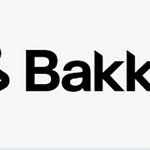Welcome to Special Situation Investing.
Today on Episode 68 we’re going to dive for a second time into Natural Resource Partners (NRP). Back in Episode 64 we introduced the company and how its primary business is collecting checks from mineral rights leased on its 13 million acres throughout the United States. Most of its revenues come from coal mining companies but NRP is far from a one-trick pony. The company derives additional revenue from a 49% stake in a soda ash production plant, from selling carbon credits on its vast timber lands, and from leases on green energy projects including geothermal, carbon sequestration, and likely soon, wind and solar.
In our last article, we indicated we were highly interested in the company for three reasons:
The coal sector, as hated and necessary as it is, has a high likelihood of outperformance for decades.
NRP appears incredibly cheap.
NRP has a number of strong areas for growth.
For more details behind these reasons, please checkout our episode released on 11 February titled, A coal royalty company — Natural Resource Partners. Since then, we’ve continued researching the company and we now are even more interested. In fact, both hosts of this show have since initiated small, growing positions in NRP. We’re putting our money were our mouth is.
So here are some of our updated thoughts on the company.
Insights from the quarterly call
On March 2nd, NRP held its quarterly conference call and we found a few highlights encouraging.
For starters, the company produced a lot of free cash flow in 2022.
For the full year, we [NRP] generated $267 million of operating cash flow, and $268 million in net income, both more than twice the prior year.
And with all the cash flow, the company remains focused on becoming debt free. Craig Nunez, NRP’s President and Chief Operating Officer, stated:
Our goal remains to retire all permanent debt, redeem all of our 12% convertible preferred equity and eliminate all outstanding warrants. Taken together, these commitments currently total approximately $465 million.
Later on he says:
If our business continues to generate free cash flow at the current run rate, I hope to reach this goal within two to two and a half years. Once these obligations are eliminated, free cash flow available for common unitholders will increase most likely in dramatic fashion.
These positive results highlight the tailwinds created by high commodity prices and a low capex business model which have allowed NRP to produce record cashflows and management to stick to their plan to reduce debt to zero. (Note: the annual report stated that inflation had little affect on the company in the years 2020-2022.) If the company is able to maintain close to this level of cashflow, which the management says they are “cautiously optimistic” about, then it’s likely unit holders will be handsomely rewarded with increasing returns over the next few years. More on that later.
The second encouraging development was a surprise reduction in the preferred equity. You’ll recall from our last write-up that NRP pays a 12% dividend on $250 million of convertible preferred equity which is a drain of $30 million per year. While redeeming this debt is a priority for NRP’s management as stated earlier, the terms of the preferred equity deal would require NRP to pay approximately a 17% premium to redeem the units today. Since management has indicated that they are unlikely to redeem the equity at a premium and since, per the terms of the deal, the premium is reduced every quarter, NRP is unlikely to redeem the equity until around the second half of 2024.
This is why it was exciting to see one of the holders of the preferred equity redeem their units early and at par value. During the call management said:
a holder of our 12% convertible preferred equity issued a conversion notice to us on $47.5 million of preferred units last month. We have the option of settling preferred unit conversion notices by either paying cash or issuing common units.
After considering our financial position, liquidity and comparing the market value of NRP common units to our estimate of intrinsic value, our Board of Directors decided to settle this conversion notice with the payment of $47.5 million of cash, instead of issuing NRP common units. As a result, the outstanding amount of our convertible preferred equity decreased from $250 million to $202.5 million.
A couple things here. First, redeeming the preferred units will reduce the amount paid in preferred dividends by about $1.5 million per quarter. Which could save NRP about $8.5 million over time depending on when the units are fully redeemed.
Secondly, we were encouraged by the management’s decision to redeem the units with cash instead of issuing common units. This tells us that management believes NRP trades at a discount to its intrinsic value. It also leads us to believe that management has a solid understanding of the dilutive effect of unit issuance. As a general principle, we look for companies that either hold the number of shares, in this case units, constant or decreases the number through buybacks. Since 2015, NRP’s unit count has stayed at 12 million. Which is encouraging to see.
One of our favorite investors, Murray Stahl, was recently asked his opinion on using equity as currency. The specific question related to whether royalty companies should use equity to purchase additional royalties. We believe his comments apply to all companies and we’re encouraged that NRP’s management seems to be on the same page. Stahl said:
I don't agree that it makes sense to acquire royalty interests for equity…I'll explain why. The royalty, no matter how good the royalty is, the royalty is finite. Sooner or later, every oil royalty has a decline curve. Sooner or later it will produce no oil, even if it's great and lasts a long period of time. The equity is forever. So equity is a perpetuity. So generally speaking, that's one of the reasons, and this is generalizable to acquisitions in a lot of businesses. You buy a business, whatever it is, in this case it's royalties, but it could be technology, it could be machinery, it could be even pharmaceuticals, it could be anything.
So all this to say, we approved of NRP management’s decision to redeem the preferred equity with an inflating currency, dollars, instead of diluting common unitholders through unit issuance.
Thoughts on valuation
Now a few thoughts on how we believe NRP currently trades at an attractive price.
When trying to decide whether or not a stock is cheap, we tend to subscribe to Monish Pabrai’s commandment number 5: Thou shalt not use Excel. In line with that thinking, we like to keep the math simple and like running back-of-the-envelope type calculations. As they say, good investments should hit you over the head with a 2x4.
Back-of-the-envelope #1
One of the first questions we asked about NRP was how much would we be paying per royalty acre? Simply dividing NRP’s market cap by its 13 million royalty acres gives a rough number of $56 per acre. While we don’t have much of a reference for coal royalty acres, oil and gas royalty companies trade in the hundreds to many thousands of dollars per royalty acre. Fifty-six dollars seems pretty cheap.
Back-of-the-envelope #2
Taking it a step further. In our last write-up we shared how the 51% of the soda ash production facility NRP doesn’t own was recently purchased for $500 million. This allows us to assume NRP’s 49% stake could reasonably demand a price of $480 million.
Given NRP has a total market cap of $734 million, substracting the $480 million for the soda ash stake leaves $254 million for the NRP’s mineral rights segment. Since the net earnings of the mineral rights segment for 2022 was $268 million, it appears this segment is trading at a PE ratio of 0.95. That is quite cheap even for coal stocks. If you look in the market today, many coal miners are trading in the 2 to 3 PE ratio range. Because of it’s higher quality business model, we could conservatively assign a PE ratio of 3 to this segment of NRP’s business. Taking $268 million, multiplying it by a factor of 3, and adding back in the soda ash segment price of $480 million, gives us a hypothetical market cap for NRP of $1.3 billion. Or 1.8x the current market cap.
Back-of-the-envelope #3
Another way of taking a stab at NRP’s valuation is by estimating a liquidation value. If we were to break up NRP into its parts and sell it, how much might we get?
So far we’ve established a $480 million valuation on NRP’s soda ash segment. So let’s figure out an estimate for the mineral rights segment.
A recent sale in the coal royalty space provides a helpful comparison.
In 2021, Anglo Pacific Group, now called Ecora Resources, sold its 1% gross revenue royalty on the Narrabri mine in Australia to Whitehaven Coal for $36 million. Over the 6.5 years prior, Anglo Pacific had received $32 million in royalty revenue which works out to about $5 million per year. So the royalty was sold for approximately a 7x multiple of its yearly revenue.
Now as an estimate we can apply that 7x multiple to NRP’s mineral rights segment royalty revenue. Taking the average of the last two year’s royalties ($263 million and $160 million) gives us approximately $212 million. Applying the 7x multiple puts the hypothetical price tag of the mineral rights segment at $1.5 billion. Adding back in the soda ash segment’s $480 million leaves us with roughly a $2.0 billion dollar liquidation value. Or 2.7x the current market cap.
Back-of-the-envelope #4
Our fourth, and final, valuation estimation is a look at what the stock appreciation could be if management is successful with its plan to bring debt to zero and “dramatically” increase cashflow available to unitholders.
Let’s assume the average free cashflow between 2021 and 2022 ($122,967,000 and $268,443,000), which is approximately $200 million, remains for the next 2.5 years and beyond. This would enable NRP be debt free within the projected time frame and then have $200 million per year available to return to unit holders.
Assuming a conservative 50% payout ratio and also that common units stay at the current 12 million units, this equates to a distribution of $8.33 per unit. Assuming the current dividend yield of 5% remains constant, the new hypothetical dividend would cause individual unit price to appreciate to $167, for a total market cap of $2.0 billion. Or, once again, 2.7x the current market cap.
So there’s a few back-of-the-envelope guestimates at a valuation for Natural Resource Partners. If such big picture guess work isn’t your style and you like discounted cashflow models and running things through excel, take a look at the latest NRP write-up on Value Investor’s Club for a very detailed valuation analysis.
Conclusion
A couple reminders as we wrap up the episode. Because we continue to like what we see from management and because we think it’s currently undervalued and has a long runway ahead, both hosts of this show are now unitholders of NRP. And also remember that NRP is a partnership, and as such, distributions are not considered qualified dividends, thus adding tax complications. As always, do your own research and know what you own and why.
With that we’ve concluded another Episode of Special Situation Investing. We hope you’re finding the show enjoyable, educational, and helpful in your own investing research.
We’ll see you all again next week on the next episode.









Share this post